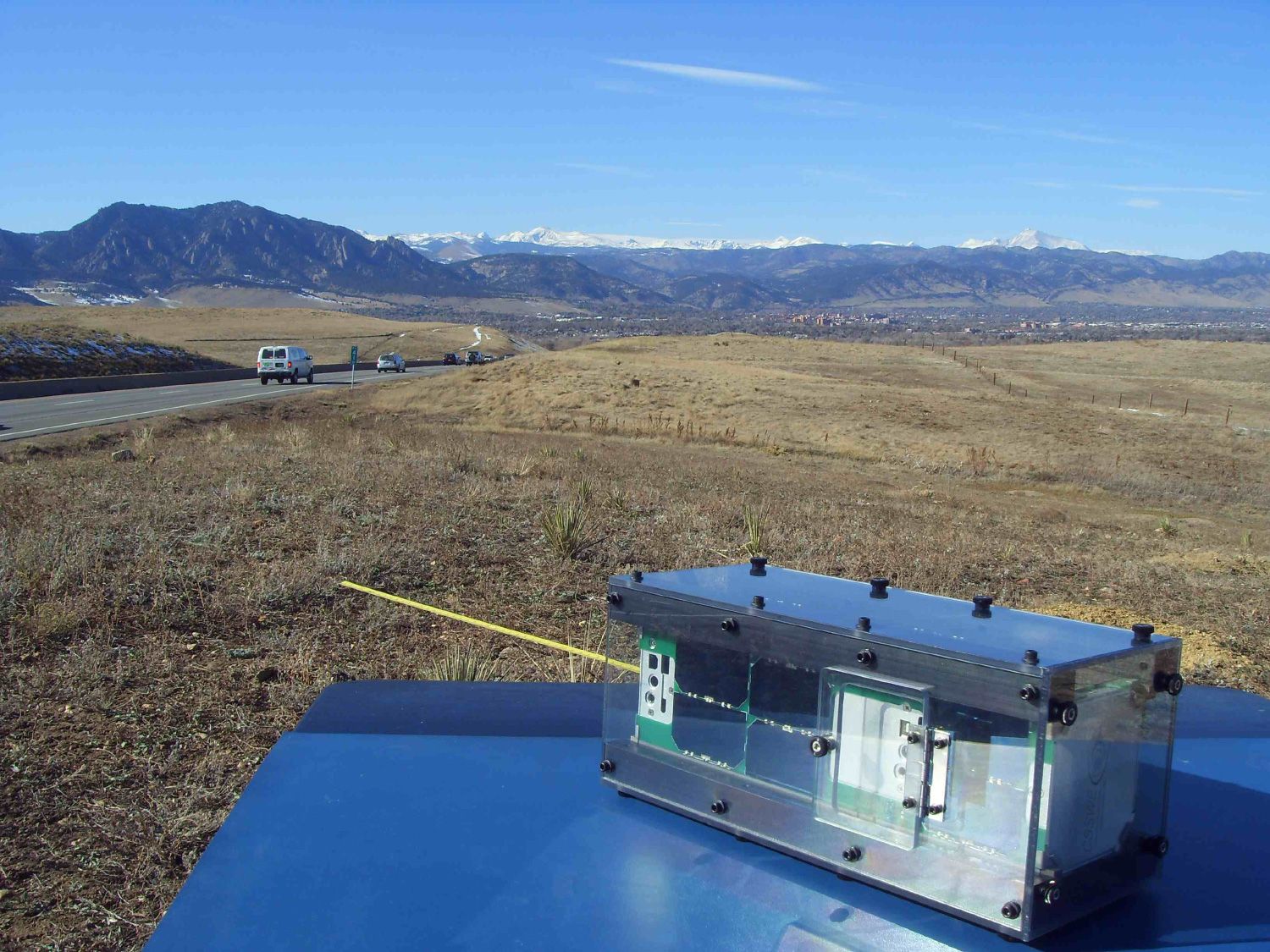
For six decades, scientists have been looking for a bunch of electrons hiding near Earth but haven't been able to find them. Those elusive particles have finally been spotted—and by a team composed mainly of college students armed with a satellite the size of a shoebox. They report their results in a new study published today in the journal Nature.
"We are reporting the first direct detection of these energetic electrons near the inner edge of Earth's radiation belt," said lead author Xinlin Li, who studies Earth's space environment at the University of Colorado Boulder. "We have finally solved a six-decade-long mystery."
The hidden electrons are the product of a process called cosmic ray albedo neutron decay. Earth is constantly bombarded by so-called cosmic rays, a sort of catch-all term for particles coming from space. When those cosmic rays hit molecules in Earth's atmosphere, the collisions cause a shower of charged particles, which should include both positively and negatively charged particles. Then the strong magnetic field that envelopes Earth traps those charged particles.
But for six decades, the numbers didn't add up: Scientists knew that whole process should play out at a pretty steady rate and produce a balanced number of positively and negatively charged particles, but they couldn't find enough negatively charged particles. A bunch of electrons were missing.
Read more: NASA SuperTIGER Balloon Launching Over Antarctica Will Hunt Rare Cosmic Rays
And that's where dozens of undergraduate and graduate students at University of Colorado Boulder and their tiny satellite, called a CubeSat, came into the picture. On board their CubeSat, which launched in 2012, was a device called the Relativistic, Electron and Proton Telescope integrated little experiment, nicknamed REPTile. REPTile is basically a miniature particle detector tuned to highly energized charged particles, which is why it was able to spot the electrons that had foiled scientists for so long.
Keeping an eye on these electrons is critically important, since they can burrow through spacesuits and destroy electronics, making them a real risk to astronauts and the horde of satellites we've put into orbit. The project was part of the school's larger research on space weather, a broader set of phenomena caused by assorted charged particles bouncing around Earth's neighborhood.
That includes the beautiful auroras or Northern Lights, which are caused by charged particles from the sun hitting Earth's atmosphere. But space weather can also have less pleasant side effects, even down on Earth's surface, like power outages and interfering with GPS and communications satellites.
Uncommon Knowledge
Newsweek is committed to challenging conventional wisdom and finding connections in the search for common ground.
Newsweek is committed to challenging conventional wisdom and finding connections in the search for common ground.
About the writer
Meghan Bartels is a science journalist based in New York City who covers the science happening on the surface of ... Read more
To read how Newsweek uses AI as a newsroom tool, Click here.








